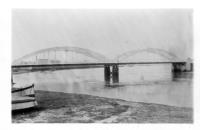Kerfies, Cleggies and all that.
Rhyl, Flintshire, Wales, United Kingdom
In 1870-72, John Marius Wilson's Imperial Gazetteer of England and Wales described Rhyl like this: RHYL, a small town and a chapelry in Rhuddlan parish, Flint. The town stands on the coast, at the mouth of the river Clwyd, and on the Chester and Holyhead railway, at the junction of the Vale of Clwyd railway, 30 miles W N W of Chester. Rose adjacent to the mansion of Ty-yn-Rhyl, an edifice of the 16th century, long the only house in the place; was a mere fishing-village so late as about 1830; has become a well-frequented watering-place; continues rapidly to improve and enlarge; commands very fine views to the Clwydian hills, Penmaen-Mawr, Ormes Head, and Snowdon; and has a head post-office, a railway station with telegraph, three good hotels, hot and cold baths, numerous bathing machines, an excellent bathing beach, a promenade pier 2, 115 feet long, formed in 1867 at a cost of £17,000, a large church built in 1839, a recent Independent chapel, a Baptist chapel built in 1867, other dissenting chapels, news-rooms, libraries, a billiard-room, and a bowling-green. The tract around it is low, flat, and naturally marshy, but has been extensively improved into very valuable land; and an embankment, 80 feet wide and nearly 8 miles long, protects it from the sea. The chapelry was constituted in 1844. Pop. in 1861, 2,965. Houses, 627. The living is a curacy in the diocese of St. Asaph. Value, £155. Patron, the Vicar of Rhuddlan.



